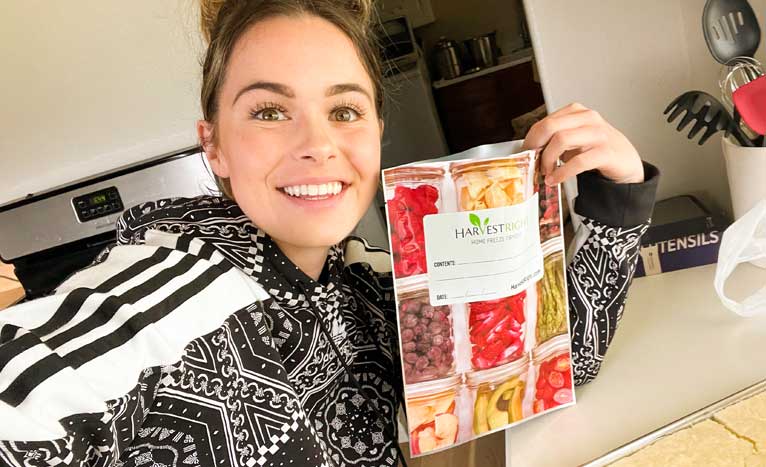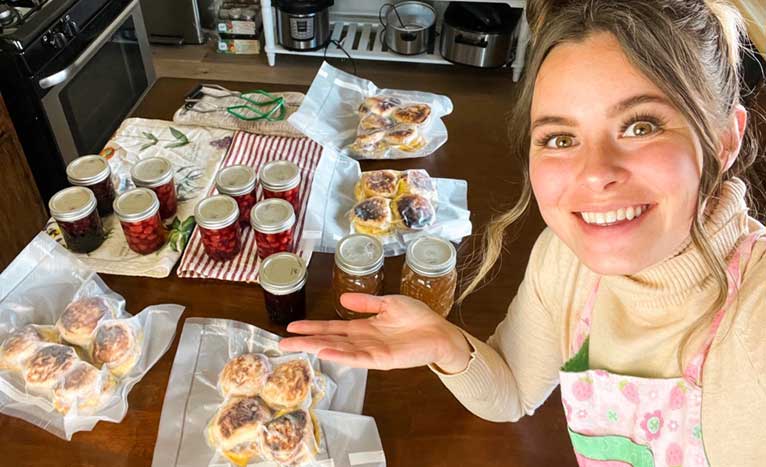Food preservation is a crucial practice that has evolved over centuries to ensure that we have access to safe and nutritious food, especially during times when fresh produce may not be readily available. Part of my homesteading venture involves a variety of food preservation methods. What I love about food preservation is that you can do it from anywhere, no land required.
This blog will explore various methods of food preservation, both traditional and modern, shedding light on how each technique helps extend the shelf life of our favorite foods. Our great-grandparents knew how to preserve food because they had no other option for the winters or during droughts. Food preservation knowledge was passed down from generation to generation and was lost when the convenience of grocery stores moved in.
Let’s revisit this ancestral knowledge!
Traditional Methods of Food Preservation
Drying and Salting
One of the earliest methods of food preservation involves drying and salting. These processes remove moisture from food, making it inhospitable to bacteria and microorganisms. Dried fruits, jerky, and salted fish are examples of foods preserved through these age-old techniques.
Dried and salted meats make great snacks or additions to charcuterie boards!

Modern Food Preservation Techniques
Freeze Drying
Freeze drying, also known as lyophilization, is a food preservation method that involves removing moisture from food while preserving its flavor, nutritional content, and texture. It works by freezing the food and then subjecting it to a vacuum environment, causing the frozen water in the food to sublimate directly from a solid to a gas without passing through a liquid state.
This process helps prevent the growth of microorganisms and enzymatic reactions that can cause food to spoil. The result is lightweight, shelf-stable food that can be rehydrated and enjoyed with nearly the same taste and texture as fresh produce. Freeze drying is commonly used to preserve a wide variety of foods, including fruits, vegetables, meats, and even entire meals.
It's an invaluable technique for extending the shelf life of foods while maintaining their quality, making it a popular choice for emergency preparedness, backpacking, and space travel, among other applications.
If you are interested in a freeze-dryer, I recommend a Harvest Right Freeze Dryer. I have had mine for two years, and I love it!
Canning
Canning is a popular modern method of food preservation that involves sealing food in airtight containers. The sealed environment prevents the growth of bacteria, yeast, and molds. Fruits, vegetables, and even meats can be preserved using this method.
What I love about canning is that you can create ready-to-eat meals in jars, so on a night that you don’t feel like making dinner, you can use a canned stew or other meal you canned ahead of time. Talk about convenience!
It is important to follow approved recipes for canning to ensure that you have safely canned foods.
Freezing
Freezing is a widely used preservation technique that involves lowering the temperature of food to inhibit microbial growth. It helps maintain the taste and texture of many foods, making it a preferred method for preserving vegetables, fruits, and prepared meals.
Some produce will need to be blanched before freezing to maintain the texture and taste of the food. Blanching is quickly scolding the produce in hot water then immediately placing in an ice bath, effectively halting enzyme processes.
It is important to remember that if your freezer goes out, you need to have a plan for the food that is in your freezer because it will go bad.
Drying and Dehydrating
In modern times, drying and dehydrating methods have been refined, allowing for the preservation of a wide range of foods. These methods remove moisture and make the food shelf-stable. Think of dried herbs, fruits, and vegetables that you can easily store for extended periods.
If you want to make homemade jerky or homemade fruit roll-ups, dehydrating is the method you will want to use.
Fermentation
Fermentation is a natural preservation process where microorganisms like bacteria and yeast convert sugars and starches in food into alcohol or organic acids. Foods like yogurt, kimchi, and sauerkraut are delicious examples of fermented delights from around the world.
One of my favorite fermented foods is kefir. Kefir is fermented milk and is filled with an array of beneficial bacteria that build a healthy gut microbiome. You can make raw milk kefir at home.
Sourdough starters are also a form of fermented food that is your continual supply of yeast for baking.
Pickling
Pickling involves immersing food in an acidic solution, typically vinegar, which creates an environment that inhibits the growth of bacteria and preserves the food. Commonly pickled foods include cucumbers, onions, and various fruits.
Pickled eggs are at the top of my list of pickled foods. When you have an abundance of eggs, you can pickle them to preserve them longer and enhance the flavor profile with spices and a vinegar brine.

Vacuum Sealing
Vacuum sealing removes air from containers, creating a vacuum that prevents the growth of spoilage microorganisms. This method is especially popular for preserving meats and prepared meals.
You can vacuum seal everything in your freezer to create more room. Food in your refrigerator can also be vacuum sealed to create room and extend the shelf-life. I vacuum seal fruits, vegetables, cheeses, and meats!
Importance of Food Preservation
The importance of food preservation cannot be overstated. It reduces food waste, ensures food security, and allows us to enjoy seasonal delights year-round. Additionally, it plays a vital role in emergency preparedness, making sure that essential sustenance is available during crises. Knowing how to preserve food goes hand-in-hand with building a food storage.
Food preservation is a diverse field with techniques ranging from age-old traditions like drying and salting to modern innovations like freeze drying. Each method has its unique advantages, making it suitable for preserving different types of food. By understanding and utilizing these preservation techniques, we can make the most of our food resources and reduce waste while enjoying the flavors of the world.
FAQs
1. Are preserved foods less nutritious than fresh foods?
Preservation methods can cause some nutrient loss, but many preserved foods retain their essential vitamins and minerals.
2. Is canned food safe to eat after the expiration date?
Canned foods can remain safe to eat for a long time after the expiration date if the can is not damaged and has been stored correctly.
3. What is the safest way to store canned and preserved foods?
Store them in a cool, dark place with low humidity to extend shelf life.
4. Are there any health concerns with chemical preservatives?
There are some concerns about the long-term health effects of certain chemical preservatives, but regulatory agencies monitor their use to ensure safety.
5. Can I preserve food at home using these techniques?
Yes, many preservation methods can be safely practiced at home. It's essential to follow recommended guidelines and ensure proper hygiene to prevent spoilage or contamination.

